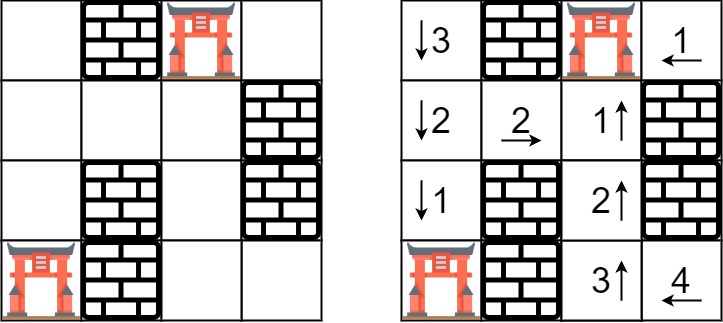286. Walls and Gates
Description
You are given an m x n grid roomsinitialized with these three possible values.
-1A wall or an obstacle.0A gate.INFInfinity means an empty room. We use the value2^31 - 1 = 2147483647to representINFas you may assume that the distance to a gate is less than2147483647.
Fill each empty room with the distance to its nearest gate. If it is impossible to reach a gate, it should be filled with INF.
Example 1:

1 | Input: rooms = [[2147483647,-1,0,2147483647],[2147483647,2147483647,2147483647,-1],[2147483647,-1,2147483647,-1],[0,-1,2147483647,2147483647]] |
Example 2:
1 | Input: rooms = [[-1]] |
Constraints:
m == rooms.lengthn == rooms[i].length1 <= m, n <= 250rooms[i][j]is-1,0, or2^31 - 1.
Hints/Notes
- 2025/01/05
- bfs
- premium
Solution
Language: C++
1 | class Solution { |